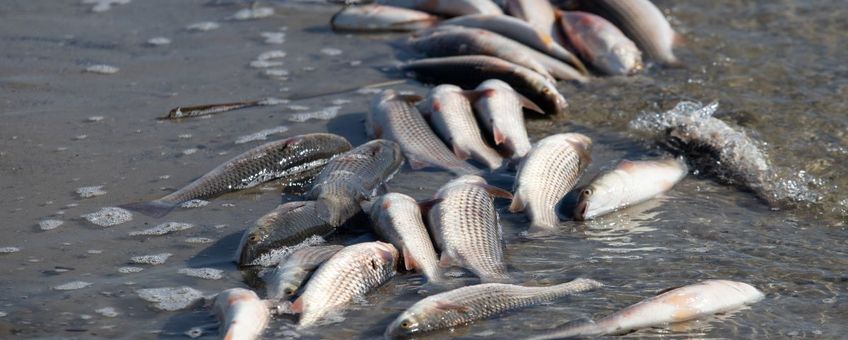
Additional nutrients intensify dead zones in oceans
NIOZ Royal Netherlands Institute for Sea ResearchVan Kemenade and colleagues looked at drill cores that were taken from the Pacific Ocean floor off the coast of California as early as 1997. "There is a very interesting, natural 'dead zone' there, that is relatively low in oxygen due to specific ocean currents from the poles and from the equator," Van Kemenade says. "By looking at how that lack of oxygen over the past 2.5 million years has correlated with warmer and colder periods, we wanted to learn how that lack of oxygen might continue to evolve in the future under the influence of changing climate."
Warmer or nutrient richer
Oxygen depletion can occur as water gets warmer. This is because warmer water can hold less dissolved gases. Because of the current warming of the oceans, they already contain 2 percent less oxygen than they did half a century ago. But lack of oxygen can also be caused by extra supply of nutrients, Van Kemenade explains. "Extra nitrogen causes extra growth of algae. Initially all those little plants in the upper layer of the water produce oxygen, but when they die and are 'eaten' by bacteria at the bottom of the ocean, the scale tips and more oxygen is consumed than produced."
Fossil molecules
For her reconstruction of oxygen levels, Van Kemenade used a very specific molecule from the drill core. "A distinct group of bacteria can break down nitrogen compounds under oxygen-free conditions. These so-called anammox bacteria produce very special molecules in the process, ladderanes. These should protect the cell from the extremely reactive metabolites in that chemical process. An additional advantage for us as researchers is that we can find those characteristic ladderanes literally hundreds of thousands of years later, as traces of these bacterial processes under oxygen-free conditions.”
Mainly nutrients
Whereas Van Kemenade had expected to see the conditions with low oxygen in the ‘history book’ of the ocean floor going up and down with warmer and colder periods in the past, she saw that ladderanes were quite common during both the ice ages and interglacials. "So, for this particular spot, we have to conclude that oxygen depletion was related not only to the fluctuations in temperature, but more importantly to the amount of nutrients in the water," Van Kemenade said.
First experience
This study was one of the first to use information from ladderans on this scale. "We should therefore not immediately translate the results to all seas where oxygen-free conditions can occur," Van Kemenade warns. "At the same time, it does serve as a warning that extra nutrients in the water can cause major problems for ocean biodiversity. Oxygen-less conditions can have major consequences for the ecosystem, but also for fisheries, for example."
More information
- The article Loss of nitrogen via anaerobic ammonium oxidation (anammox) in the California Current system during the late Quaternary was published in the journal Biogeosciences.
Text and photo: NIOZ
